American Cockroaches (Periplaneta Americana) are large roaches, ranging in length up to an inch and a half. These are the roaches that people usually are talking about when they say "You could have put a saddle on it."
American cockroaches prefer dark, moist, warm areas. They are commonly found in basements, steam tunnels, boiler rooms, sewers, rubble foundations, and similar places. Often they aren't even noticed until a light is turned on, and they scurry away rapidly. Adult American cockroaches of both sexes have working wings and at least some flight capability, but oddly enough, they seldom fly. Despite the name, none of the Periplaneta species are endemic to the Americas; P. Americana was introduced to the United States from Africa as early as 1625. They are now common in tropical climates because human activity has extended the insect's range of habitation, and are virtually cosmopolitan in distribution as a result of global commerce.
Morphology:
|
The American cockroach shows a characteristic insect morphology with its body bearing divisions as head, trunk, and abdomen. The trunk, or thorax, is divisible in prothorax, mesothorax and metathorax. Each thoracic segment gives rise to a pair of walking appendages (known as legs). The organism bears two wings. The forewings, known as tegmina arises from mesothorax and is dark and opaque. The hind wings arise from metathorax and are used in flight, though they rarely do. The abdomen is divisible into ten segments. |
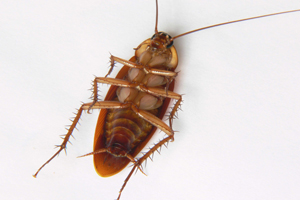 |
Life cycle:
|
American cockroaches have three developmental stages: egg, nymph, and adult. Females produce an egg case (ootheca) which protrudes from the tip of the abdomen. On average, females produce 9–10 oothecae, although they can sometimes produce as many as 90. |
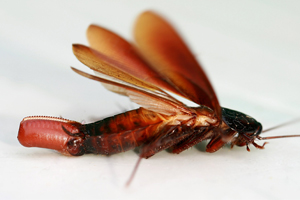 |
|
The cockroach is paurometabolous. After about two days, the egg cases are placed on a surface in a safe location. Egg cases are about 0.9 centimeters (0.35 in) long, brown, and purse-shaped. |
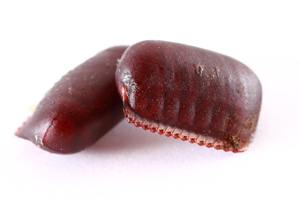 |
|
Immature cockroaches emerge from egg cases in 6–8 weeks and require 6–12 months to mature. After hatching, the nymphs feed and undergo a series of 13 molting (or ecdysis). Adult cockroaches can live up to an additional year, during which females produce an average of 150 young. |
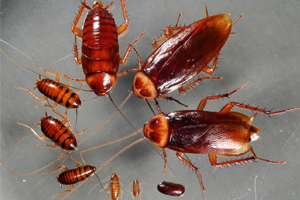 |
Diet:
American cockroaches are omnivorous and opportunistic feeders that eat a great variety of materials such as cheese, beer, tea, leather, bakery products, starch in book bindings, manuscripts, glue, hair, flakes of dried skin, dead animals, plant materials, soiled clothing, and glossy paper with starch sizing. They are particularly fond of fermenting foods. They have also been observed to feed upon dead or wounded cockroaches of their own or other species.
Control
Due to their large size and slow development, large infestations of these insects are not common within houses. In cold climates these cockroaches may move indoors when it turns cold, seeking warmer temperatures and food. Cockroaches may enter houses through sewer connections, under doors, around plumbing, air ducts, or other openings in the foundation. Cockroach populations may be controlled through the use of insecticides. It is also wise to cover any cracks or crevices through which cockroaches may enter. Also, always clean any spills or messes that have been made so that the cockroaches will not be attracted to the food source. Another way to prevent an infestation of cockroaches is to thoroughly check any material that is brought inside. Cockroaches and egg cases can be hidden inside or on furniture, in boxes, suitcases, grocery bags, etc.
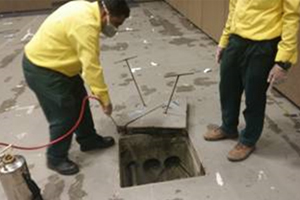 |
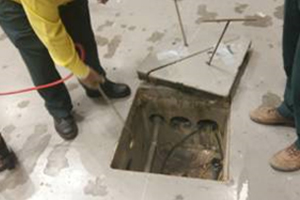 |
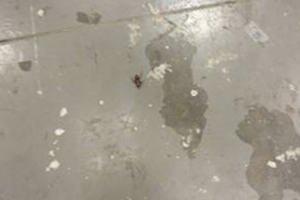 |
Contact your pest management professional and request an inspection, to prepare a comprehensive pest management plan that will effectively and efficiently deal with the specific pest problem.

